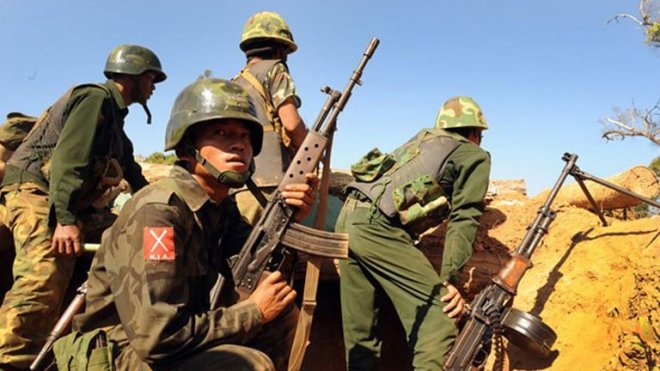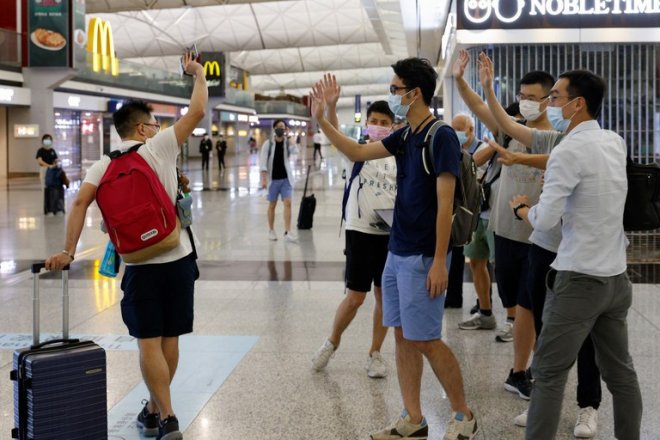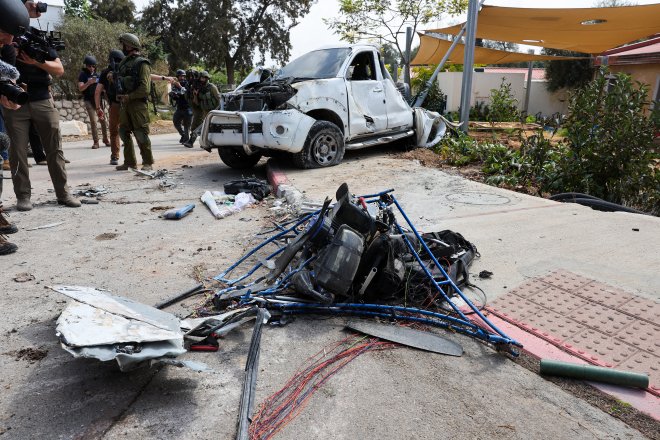Evicted Yangon residents pushing to return face threats
Ever since soldiers forced them out of their Yangon home in November, Ma Hla, her husband and their two kids have tried to survive in a one square-meter (10-square-foot) dormitory room.But with jobs tough to come by in Myanmar’s fragile post-coup economy, even the modest 50,000-kyat ($24) monthly rent is proving too much for the family, says Ma Hla, whose husband has been unable to find consistent work.
Desperate, Ma Hla this month joined a group of about 100 other evicted villagers who gathered along a nearby road ward to demand they be allowed to return to their homes.
In all, about 40,000 residents from the five neighborhoods that make up Mingalardon township in Myanmar’s largest city – San Thamar Di, Myal Myan Aung, Gon Nyin Ni, Dhamma Par La and Myawaddy Site Khin – were kicked out.
Soldiers have responded by firing warning shots and hiring thugs who wave swords to warn protesters against persisting with their demands, residents said.
“They threatened us saying, ‘Do you guys have nothing else to do? Don’t come and mess with us. Just get lost right now, or we are going to arrest you all right away,’” Ma Hla told Radio Free Asia.
Her name and the names of other residents quoted in this story have been changed to protect them from retribution for speaking out.
“They threatened in many various ways. They even fired six times in the early morning to scare us away,” Ma Hla said. “Nobody dared to gather on that day except me. We are scared, but I went there to demand as I am really in trouble. I even risk my life to demand our land for the future of my two kids.”
1.2 million displaced
The military claims it owns the land and has set about demolishing the homes that in some cases the displaced families had lived in for decades.
Some residents had settled in the area in the aftermath of Cyclone Nargis, a 2008 Category 4 storm that cut a devastating path across Myanmar, killing an estimated 140,000 people. Others came to the township for refuge after fleeing violent attacks on civilians in Rakhine state that forced tens of thousands of people to flee that region northwest of Yangon.
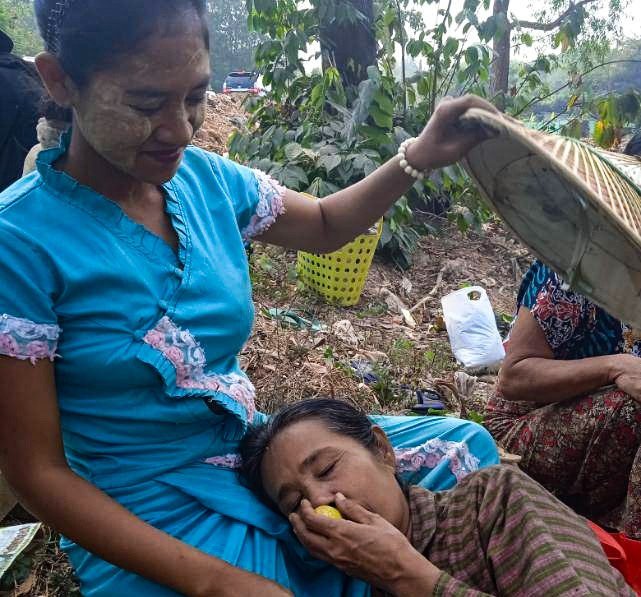 Two women who are part of the group of residents demanding they be allowed to return to their homes sit by the roadside near the San Thamardi quarter of Mingaladon township on Feb. 7, 2023. Credit: RFA
Two women who are part of the group of residents demanding they be allowed to return to their homes sit by the roadside near the San Thamardi quarter of Mingaladon township on Feb. 7, 2023. Credit: RFAThe pressure on civilians has increased in the chaos since the February 2021 military takeover from the democratically elected government.
According to the U.N., more than 1.2 million people have been forced to relocate within the country since the coup. The military junta’s removal of civilian homes is a violation of basic human rights, a war crime and a crime against humanity, two human rights experts said in a Dec. 2, 2022, statement released by the United Nations.
Two Mingalardon township residents reportedly took their own lives after the military ordered them to vacate their homes, the statement said.
“Forced evictions and mass burning of homes are gross violations of human rights. The junta must immediately stop the systematic destruction, burning and bulldozing of civilian homes,” Balakrishnan Rajagopal, U.N. special rapporteur on housing, and Thomas Andrews, special rapporteur on human rights in Myanmar, said in the statement.
Fragile economy
Compounding the problem for the displaced families like Ma Hla’s is that under pressure from sanctions, worker strikes and consumer boycotts, Myanmar’s economy is significantly smaller than it was before the coup.
Unable to afford new homes, some of the families have been forced to live in monasteries for shelter since their evictions.
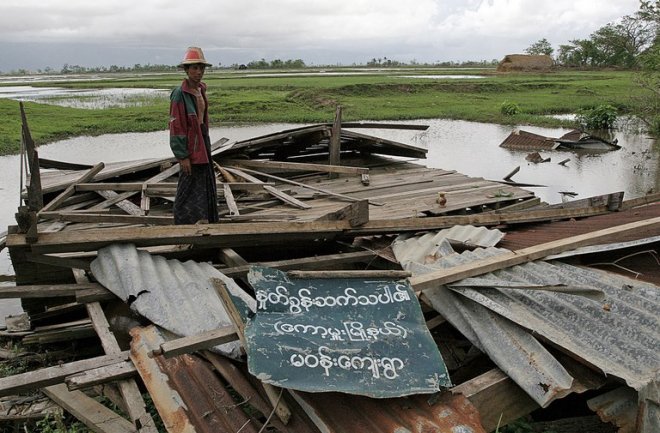 Some residents settled in Mingalardon township in the aftermath of Cyclone Nargis [shown], a 2008 Category 4 storm that killed an estimated 140,000 people. Credit: AFP file photo
Some residents settled in Mingalardon township in the aftermath of Cyclone Nargis [shown], a 2008 Category 4 storm that killed an estimated 140,000 people. Credit: AFP file photoA retired headmistress, who bought a house in the Gon Nyin Ni ward with her pension money, told RFA in November that her home had been demolished just two months after her purchase.
“I got a pension after working for the government for about 40 years. I bought a house there that was priced 6 or 7 million kyats, with the gratuity I got. I wanted to stay in my own house. I am really saddened now that this happened.”
Because the military has destroyed their homes, the residents will also likely need to be compensated to pay to rebuild them if they are allowed to return.
Military response
The military junta has not publicly responded to the requests by the evicted Mingalardon residents.
Under threat, the number of protesters has dwindled. Around 100 people gathered the first day on Feb. 5, but only around 40 were left on Feb. 7, local people
said.
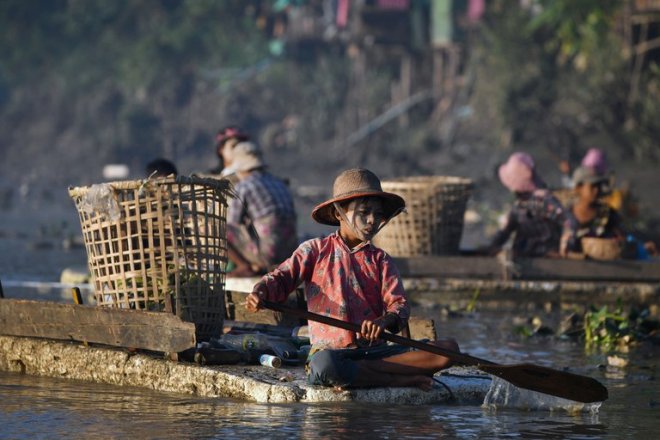 Myanmar’s economic problems, as evidenced by these waste collectors combing a Yangon creek last month for plastic and glass to recycle, have magnified problems for Mingalardon township’s displaced families. Credit: AFP file photo
Myanmar’s economic problems, as evidenced by these waste collectors combing a Yangon creek last month for plastic and glass to recycle, have magnified problems for Mingalardon township’s displaced families. Credit: AFP file photoMa Cho is one of the protesters who has since retreated out of fear.
“I dare not go there to demand anymore,” she told RFA. “The government officials threaten us in many ways. In addition, they have hired some lawless fighters who are holding swords.
“Although I don’t have anything, I am still very scared.”
Others said they would continue to push for some sort of compensation, despite the risks.
“We are facing difficulties now,” said evicted resident Ko Maung. “Our livelihood has been difficult. Since we don’t have stable jobs, we can’t even afford our food.
“We can’t pay the rent. I don’t think it’s going to get better this way,” he said. “That’s why, we are going to demand on behalf of all the residents, a chance to return to our wards no matter how poorly we will have to live there.”
Translated by Myo Min Aung. Edited by Jim Snyder and Malcolm Foster.
[圖擷取自網路,如有疑問請私訊]
|
本篇 |
不想錯過? 請追蹤FB專頁! |
| 喜歡這篇嗎?快分享吧! |
相關文章
AsianNewsCast








